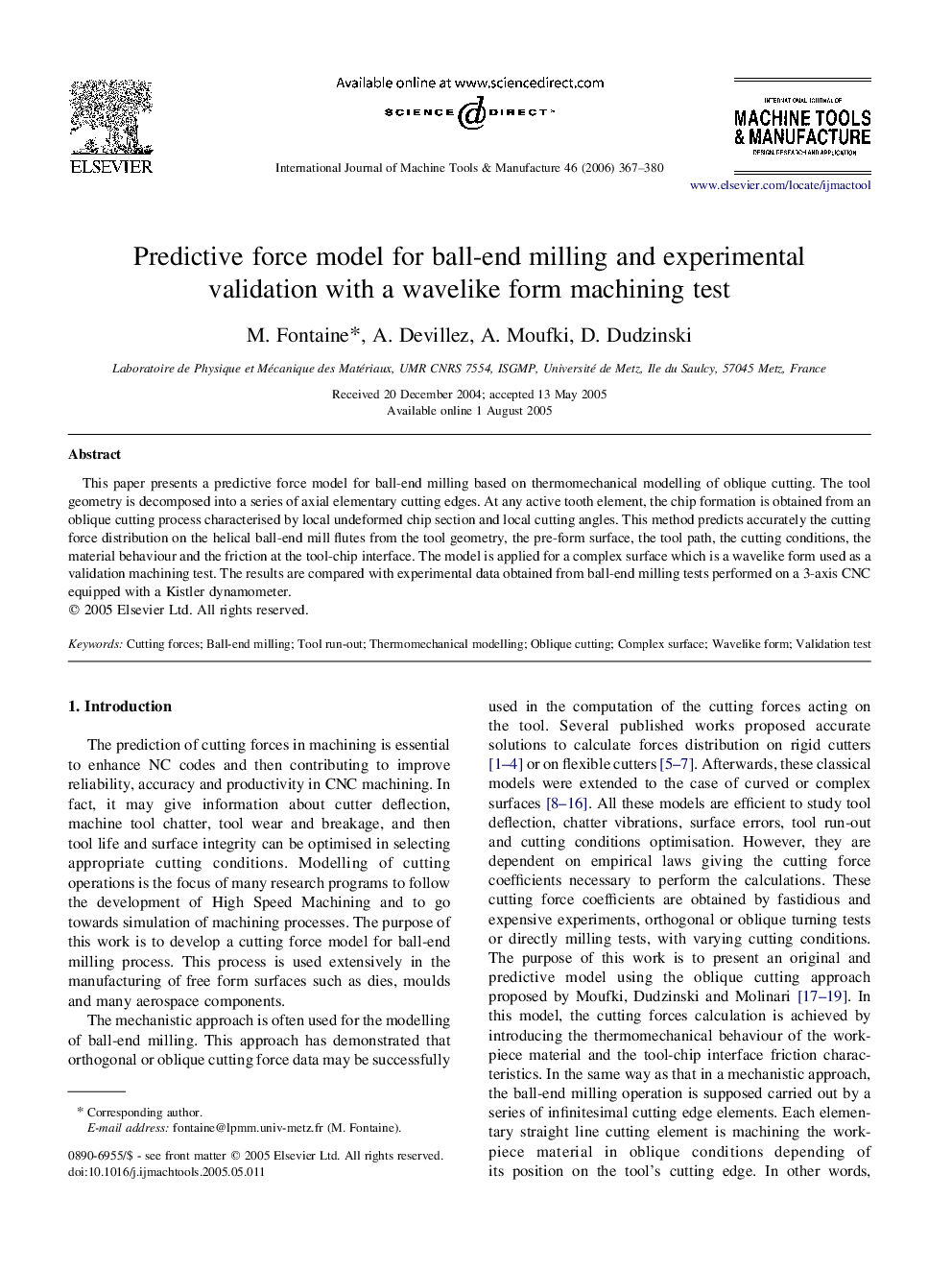| Article ID | Journal | Published Year | Pages | File Type |
|---|---|---|---|---|
| 784782 | International Journal of Machine Tools and Manufacture | 2006 | 14 Pages |
This paper presents a predictive force model for ball-end milling based on thermomechanical modelling of oblique cutting. The tool geometry is decomposed into a series of axial elementary cutting edges. At any active tooth element, the chip formation is obtained from an oblique cutting process characterised by local undeformed chip section and local cutting angles. This method predicts accurately the cutting force distribution on the helical ball-end mill flutes from the tool geometry, the pre-form surface, the tool path, the cutting conditions, the material behaviour and the friction at the tool-chip interface. The model is applied for a complex surface which is a wavelike form used as a validation machining test. The results are compared with experimental data obtained from ball-end milling tests performed on a 3-axis CNC equipped with a Kistler dynamometer.
